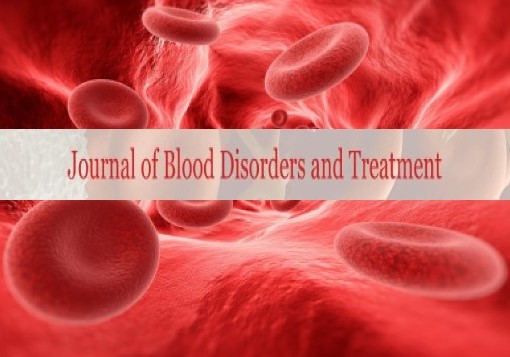Immune System Microorganisms for Intense Lymphoblastic- Leukemia Treatment
Received: 16-Oct-2020 Accepted Date: Nov 22, 2020; Published: 29-Nov-2020
Citation: Rudin S. Immune System Microorganisms for Intense Lymphoblastic- Leukemia Treatment. J Blood Disord Treat. 2020; 3(4):3.
This open-access article is distributed under the terms of the Creative Commons Attribution Non-Commercial License (CC BY-NC) (http://creativecommons.org/licenses/by-nc/4.0/), which permits reuse, distribution and reproduction of the article, provided that the original work is properly cited and the reuse is restricted to noncommercial purposes. For commercial reuse, contact reprints@pulsus.com
Intense lymphoblastic leukemia (ALL) is a forceful issue brought about by threatening change of lymphoid cell ancestry forebears in bone marrow. Traditionally, ALL can be started from B-cell forerunner ancestry (BCL-ALL), which understands lion's share cases, or T-cell antecedent ancestry (TCL-ALL). Everything is a most basic sort malignant growth in youth and enormous presence of impacts is found in fringe blood (PB) and bone marrow (BM). In this subject, Cortelazzodetailly audits fundamental highlights of ALL, including frequency, hazard factors, hereditary adjustments in both BCL-ALL and TCL-ALL, clinical introductions, and others intriguing point. Customary therapy methodology depends on escalated multi-drug chemotherapy concurring various conventions. Top notch drugs incorporate vincristine, cyclophosphamide, cytarabine, methotrexate, prednisone, thioguanina, nitrosoureas, anthracyclines, and others [1]. There are different papers distributed portraying helpful methodologies for the particular appearances of the illness. These treatments are significant for the demolition of malignant growth cells, bringing about diminished shoots including in patients. In any case, a few issues related with customary chemotherapy are noticed. For instance, most chemotherapy medicines don't come to the cerebrum and marrow regions, so it very well might be important to infuse it legitimately into the cerebrospinal liquid to execute disease cells here. Moreover, poisonousness is a genuine result saw in the chemotherapy technique, in light of the fact that the medications don't specifically follow up on the malignant growth cells. Extra impacts incorporate balding, queasiness, retching, discharge, looseness of the bowels and defenselessness to contaminations [2]. Due to the weakening impacts of chemotherapy, new techniques which dispose of or limit these terrible impacts are important. Along these lines, disease immunotherapy has as of late created as a promising apparatus for helpful techniques. Significant bit of leeway of immunotherapy is to empower selectivity to disease cells and subsequently stay away from many results saw in customary treatments. Fanciful antigen receptors (CAR) T cells have as of late arose as an immunotherapy segment intended to explicitly follow up on an objective antigen [3]. In against disease immunotherapy, a CART T cell is a T lymphocyte removed from own patient, at that point hereditarily adjusted to hold a recombinant receptor explicit against an objective tumor antigen lastly imbued once more into the patient. Most tests utilizing this system are presently in clinical period of study. The outcomes in clinical preliminaries were promising, however results have been noticed. In a survey distributed in June, Luskin and DeAngelo talks about Vehicle T cell treatment for ALL and progressing endeavors to improve adequacy and decline results, for example, harmfulness. Huge restrictions portrayed in clinical preliminaries incorporate neurotoxicity, poisonousness "on track, off organ" (when target antigen is available in different organs), genotoxicity, excessive touchiness responses, and different issues, all with changing power and recurrence
REFERENCES
- Terwilliger T, Abdul-Hay M. Acute lymphoblastic leukemia: A comprehensive review and 2017 update. Blood Cancer J. 2017;7(6):e577.
- Cortelazzo S, Ferreri A, Hoelzer D, et al. Lymphoblastic lymphoma. Crit Rev OncolHematol. 2017;113:304-17.
- Reiter A, Schrappe M, Ludwig WD, et al. Intensive ALL-type therapy without local radiotherapy provides a 90% event-free survival for children with T-cell lymphoblastic lymphoma: a BFM group report. Blood. 2000;95(2):416-21.





